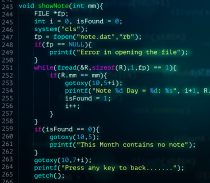⟵
Our comprehensive curriculum covers the fundamentals of React, including components, props, state, and JSX syntax. Learn how to create dynamic and interactive web applications using React's declarative approach to building UI components. Dive into advanced topics like managing state with Redux, handling asynchronous data with Axios, and optimizing performance with React's virtual DOM
-
Understanding the differences between functional and class components

- Organizing components in a React application
- State and Props
- Understanding state and props in React.js
- Managing component state
- Passing data between components using props
- Understanding the immutability of React state
- Best practices for managing state and props
- Lifecycle Methods

-
Understanding the React component lifecycle
- Exploring lifecycle methods such as componentDidMount, componentDidUpdate, componentWillUnmount, etc.
- Implementing side effects and asynchronous actions using lifecycle methods
- Optimizing component performance with lifecycle methods
- Handling Events
-
Creating event handlers in React.js
- Binding event handlers to components
- Understanding event handling in React.js
- Handling user interactions and user input
- Dealing with event propagation and delegation
-
Conditional Rendering

- Implementing conditional rendering in React.js
- Using conditional statements and ternary operators for rendering
- Handling conditional rendering based on state and props
- Showing or hiding components based on runtime conditions

-
Lists and Keys
- Understanding the importance of keys in React.js
- Iterating over lists using map and key prop
- Managing dynamic lists and updating UI efficiently
- Best practices for working with lists and keys
-
Forms in React
- Handling forms in React.js
- Creating controlled components for form input
- Validating form input using state and event handling
- Handling form submission and implementing form validation
-
Component Composition
- Composing components in React.js
- Reusing components and creating modular UIs
- Passing props between nested components
- Implementing component composition patterns
-
Hooks
- Introduction to React Hooks
- Understanding useState, useEffect, useContext, and other built-in hooks
- Managing component state and side effects using hooks
- Refactoring class components to functional components with hooks
-
Context API
- Understanding the Context API in React.js
- Creating and consuming context providers and consumers
- Managing global state with the Context API
- Implementing theme switching and authentication with context
-
Routing in React
- Implementing client-side routing with React Router
- Creating routes and nested routes
- Handling route parameters and query strings
- Implementing route-based code splitting for performance optimization
-
Fetching Data
- Fetching data from external APIs in React.js
- Using fetch API and Axios for making HTTP requests
- Managing loading states and error handling
- Updating UI based on fetched data
- Optimizing Performance
-
Identifying performance bottlenecks in React applications
- Implementing code-splitting and lazy loading
- Memoizing components and using React.memo
- Implementing should Component Update and Pure Component for optimizing rendering
-
Testing React Applications
- Introduction to testing React applications
- Writing unit tests using Jest and React Testing Library
- Testing component behavior and interactions
- Mocking external dependencies and asynchronous code for testing
-
Deployment
- Deploying React applications to different hosting platforms
- Building optimized production builds with webpack or Create React App
- Configuring deployment pipelines with continuous integration tools like GitHub Actions or CircleCI
-
Advanced Topics
- Server-side rendering with Next.js
- Building progressive web apps (PWAs) with React
- State management with Redux or React Context
- Integrating React with other libraries and frameworks
- Exploring advanced patterns and techniques in React development



